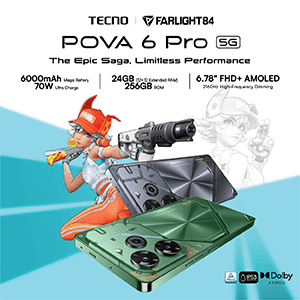
Competition in the sub PHP 35K mirrorless camera market has become the favorite with. So, we wanted to know how the consumer favorites performed! Let's check!
 |
| Canon EOS M3 vs Fujifilm X-A3! |
We were invited to the 20th anniversary of Canyon Woods in Tagaytay where there is a lush variety of areas like the tall skyscraping hotel, the wooden lodge like clubhouse and the vast golf course that are all surrounded by small bodies of water. This is all complimented by domesticated animals that roam around. This made us realize that this would be a great place to have a camera shoot out. At the time we were reviewing these cameras so we saw it as a great opportunity.
 |
| Canyon Woods Lake front cottages! |
We are looking at two cameras that are similarly priced and that performs similarly well in our reviews. The link for the reviews of the Fujifilm X-A3 can be found here while the link for the Canon EOS M3 is here.
These two have become popular not just because of the price but because of the features packed into them. But we wanted to know more about where these cameras can go. So we got the X-A3 with the Kit XC 16-50 and the XF 23 f/2.0 prime shoot out with the M3 with 15 to 45 kit with the 22 mm f/2.0 prime.
Fujinon XC 16 to 50 Vs EOS M 14 to 45
Below are shots with both the X-A3 with the XC 16 to 50 kit lens and the EOS M3 with the EOS M 14 to 45 kit lenses. All were shot in full manual at the exact same settings at their widest focal to their longest focal length (15mm for EOS M and 16 mm for XC to 45mm for EOS M and 50mm to XC).
 |
| EOS M3 + EOS M 18 to 55 at 18 mm |
 |
| X-A3 + Fujinon 16 to 50 at 16 mm |
 |
| Canon EOS M3 + EOS M 18 to 55 at 55 mm |
 |
| X-A3 + Fujinon 16 to 50 at 50 mm |
We liked the warmer colors of the Canon EOS M3 here, but we like the contrast and the real to life color accuracy of the Fujifilm X-A3; Therefore, in this round the test is a tie.
 |
| Canon EOS M3 + 18 to 55 at 55 mm, F5.6, ISO 200, 1/160th second! |
 |
| 100% Crop Canon EOS M3 + 18 to 55 at 55mm, F5.6, ISO 200, 1/160th second |
 |
| Fujifilm X-A3 + 16 to 50 at 50 mm, F5.6, ISO 200, 1/160th second |
 |
| 100% Crop of Fujifilm X-A3 + 16 to 50 at 50mm, F5.6, ISO 200, 1/160th second |
In this round, we can see that if we crop it the image at 50 mm at F5.6 100% the Fujifilm Kit lens has more contrast and resolution than the softer Canon EOS M kit lens! Although, we do like the warmer tones that the Canon EOS M3. It is clear that for certain situation, the auto white balance of the Canon tends to favor warmer tones. So for this round, Fujifilm gets one point!
 |
| EOS M 18-55 at 18 mm f/5.6 |
 |
| XF 16-50 at 16 mm f/5.6 |
In this picture of the duck on the dock, the Canon's auto white balance nails it with better true to life color reproduction, but the Fujifilm has to our eyes more pleasing vibrant colors, with higher resolution, and better contrast.
Notice that straight out of camera JPEGs is that at the same exact exposure triangle settings, the X-A3 is noticeably darker and with better global contrast and with better micro contrast (Tonality). The M3 tended to add a little more saturation and warmth to the pictures while the X-A3 reproduced the colors accurately.
In terms of resolution, both lenses did superbly and will only have a little difference when pixel peeped. The Fujifilm kit lens is sharper and has more contrast at 50mm than the Canon EOS M kit lens at 55mm. Both are sharp at the center at and softens as we reach the edges. I personally do not mind this as the softness adds to the dreamy feel that I personally like on my photos. This may disappoint people who prefer clinical sharpness across the frame.
For distortion and vignetting the X-A3 and the EOS automatically corrects for these so for the casual shooters who only use JPEGs, there isn't much to worry about. This can easily be fixed in lightroom as well.
Fujinon XF 23 f/2.0 Vs EOS M 22 f/2.0
 |
| EOS M22 at f/8, ISO 200, 1/30th |
 |
| XF23 at f/8, ISO 200, 1/30th |
 |
| 100% Crop EOS M22 at F8, ISO 200, 1/30th 3 |
 |
| 100% Crop XF23 at f/8.0, ISO 200, 1/30th |
In this test, we set both the Fujifilm XF 23 and the Canon EOS M22 at F8 to take a picture of this colorful flower with the leaves in the background. In terms of color, the Fujifilm rendered a warmer tone than the Canon. In this test Canon is more accurate as the true conditions of that shot was dark and rainy and therefore has this colder hue BUT the If you click on the images and go to Flickr, the Fujifilm X-A3's images have better contrast, resolution and better bokeh.
 |
| Canon EOS M3 + EOS M 22 mm at f/2, 1/2500th second, ISO 200 50% crop! |
 |
| Fujifilm X-A3 + XF 23 at f/2, 1/2500th of a second, ISO 200 at 50% crop! |
For the duck headshot, we found that we liked the Canon's resolution and contrast more than the Fujifilm. Though if you look closely at the unedited Flickr link, the Fujifilm has better color vibrance and better bokeh.
This is the same for the pictures below where we shot the same seen at different apertures to see how the depth of field widens and how each lens rendered the out of focus areas (bokeh).
 |
| Canon EOS M3 + EOS M 22 mm f/2 at f/2 ISO 200 |
 |
| X-A3 + Fujinon XF 23 F2 at f/2 ISO 200 |
 |
| EOS M 22 f/2 at f/5.6 ISO 200 |
 |
| XF 23 F2 at f/5.6 ISO 200 |
 |
| EOS M 22mm f/2 at f/16 at ISO 800 |
 |
| XF 23 f/2 at f/16 ISO 200 |
Everybody has their own type of bokeh that they like. Some like it creamy, some like it busy some like soft bubble bokeh! And depending on your favorite, that will be the winner for this test. What surprised us is that even though we are at the exact same exposure settings, but the Canon tended to overexpose images at the larger apertures only at this test though.
 |
| EOS M22 at f/16, ISO 200 |
 |
| XF 23 at f/16 ISO 200 |
Here we have the sunstar tests where we look at how pleasing the star looks and how may points are there. Usually the number of points are determined by how many aperture blades are there in a lens. At F16, we like the pointed shape of the sun rays of the Fujifilm but this is the limit as to where the XF23 can be stopped down. The Canon EOS M22 can be stopped down to f/2.2 which would give a better sunstar all together at the cost of either higher ISO or a slower shutter speed for the Canon.
 |
| ISO for both cameras are great even at 640! |
Lastly, is the noise test. In our time at the beautiful Canyon Woods, we could not do a proper outdoor low light test because it was always raining when the sun went down so we couldn't find time to shoot at higher ISO. But when we reviewed both cameras individually (the link for the review of M3 is here, while the X-A3 is here) Both performed well with decent noise up until 3200.
It was at ISO 6400 that the images started soften but usable. Any higher than 6400 for both cameras is not usable for professional use. The noise is there but it adds texture which is what we like. It reminds us a little of film. We like the rendering of the noise of the Canon though at ISO 3200 and higher. But for the picture above, we like the Fujifilm's better.
Verdict
Putting images side by side tell the different characteristics of each camera and each lens that are on them. Each combination is unique and it has proved difficult which we liked better. In most cases, the Fujifilm had more vibrant colors, had higher resolved details and had better contrast, but the Canon's images had more accurate color reproduction, had better auto white balance and had better high ISO grain performance.
So in conclusion, it falls down to personal preference. If you like vibrant colors with images that pop that is a result of the better performing Fujifilm Fujinon lenses at a higher price point then the Fujifilm may be for you, But If you like better High ISO performance, true to life color reproduction and more affordable but lesser performing EOS M lenses, then the Canon maybe for you!
Either camera is a winner for its size, price and performance!
Canyon Woods
 |
| Boboy of APO Hiking and Ms. Kuh Ledesma |
We enjoyed our time in Canyon Woods Tagaytay where all of these shots were taken. The place is huge! Below are pictures of Canyon Woods:
 |
| Golf time |
 |
| Nice view |
There are individual cottages, to residences, to a hotel, a condominium, a clubhouse, multiple pools, a golf course and a shuttle service to take you around! If you guys are looking for a place to relax or a place to take pictures, Canyon Woods is not a bad choice.


















































Post a Comment